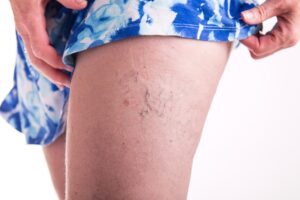Spider Veins Facts You Need to Know
Are you tired of hiding your legs or feeling self-conscious about spider veins? You’re not alone. Spider veins affect millions of people, and while they may be common, there are still many misconceptions surrounding these pesky little blemishes. From causes to treatments, we’ll cover everything you need to know in this informative blog post. Let’s dive in and get those legs looking their best!
What are Spider Veins?
Spider veins are one of the most common vascular conditions affecting adults. They are small, thin veins that branch out from larger blood vessels and are often red, blue, or purple in color. Spider veins are typically found on the legs and face but can occur anywhere on the body. While they are usually not painful or harmful, many people choose to treat them for cosmetic reasons.
What Causes Spider Veins?
There are many factors that can contribute to the development of spider veins. These include:
- Heredity: If your family has a history of spider veins, you may be more likely to develop them yourself.
- Pregnancy: The increased weight and pressure on the pelvis during pregnancy can cause spider veins.
- Hormonal changes: Spider veins can be exacerbated by hormonal changes, such as those during puberty, menopause, or taking hormone replacement therapy.
- Weight gain: Being overweight puts extra pressure on the veins in your legs and can lead to spider veins.
- Standing or sitting for long periods of time: This can apply both to occupations that require lengthy periods of standing or sitting, as well as hobbies such as cooking or playing an instrument.
- Clothing: Clothing that is tight or constrictive around the waist, groin, or legs can contribute to the development of spider veins.
Symptoms of Spider Veins
Most people with spider veins do not have any symptoms. However, some people may experience the following symptoms:
- Aching or cramping in the legs
- Ankle swelling
- Burning, throbbing, or tingling in the legs
- Fatigue in the legs
- Heaviness in the legs
- Itching around the veins
- Restless legs syndrome
Treatment Options for Spider Veins
There are several different treatment options available when it comes to spider veins. Some of the most popular and effective treatments include:
- Sclerotherapy: This is a minimally invasive procedure that involves injecting a solution directly into the vein. The solution works to collapse the vein, which is then reabsorbed by the body over time.
- Endovenous laser therapy: This is another minimally invasive option that uses laser energy to heat up and destroy the vein.
- Radiofrequency ablation: This treatment also uses heat to destroy the vein but uses radiofrequency waves instead of lasers.
Next Step: Consult with Vanishing Veins Northwest
At Vanishing Veins Northwest, we want you to understand what causes spider veins and what you can do to manage them. We will discuss all options, with vein treatments being on e. All our treatment options are safe and effective, so it just comes down to personal preference as to which one you choose.
